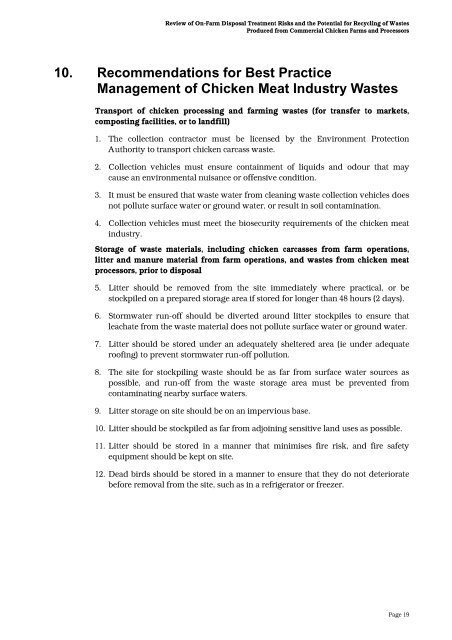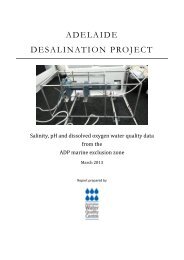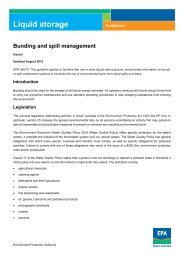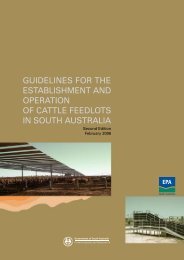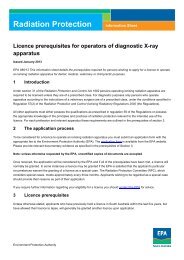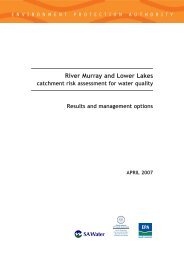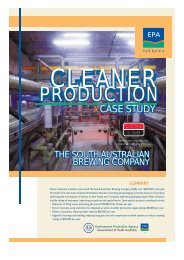Commercial Chicken Farms and Processors - EPA
Commercial Chicken Farms and Processors - EPA
Commercial Chicken Farms and Processors - EPA
Create successful ePaper yourself
Turn your PDF publications into a flip-book with our unique Google optimized e-Paper software.
Review of On-Farm Disposal Treatment Risks <strong>and</strong> the Potential for Recycling of Wastes<br />
Produced from <strong>Commercial</strong> <strong>Chicken</strong> <strong>Farms</strong> <strong>and</strong> <strong>Processors</strong><br />
10. Recommendations for Best Practice<br />
Management of <strong>Chicken</strong> Meat Industry Wastes<br />
Transport of chicken processing <strong>and</strong> farming wastes (for transfer to markets,<br />
composting facilities, or to l<strong>and</strong>fill)<br />
1. The collection contractor must be licensed by the Environment Protection<br />
Authority to transport chicken carcass waste.<br />
2. Collection vehicles must ensure containment of liquids <strong>and</strong> odour that may<br />
cause an environmental nuisance or offensive condition.<br />
3. It must be ensured that waste water from cleaning waste collection vehicles does<br />
not pollute surface water or ground water, or result in soil contamination.<br />
4. Collection vehicles must meet the biosecurity requirements of the chicken meat<br />
industry.<br />
Storage of waste materials, including chicken carcasses from farm operations,<br />
litter <strong>and</strong> manure material from farm operations, <strong>and</strong> wastes from chicken meat<br />
processors, prior to disposal<br />
5. Litter should be removed from the site immediately where practical, or be<br />
stockpiled on a prepared storage area if stored for longer than 48 hours (2 days).<br />
6. Stormwater run-off should be diverted around litter stockpiles to ensure that<br />
leachate from the waste material does not pollute surface water or ground water.<br />
7. Litter should be stored under an adequately sheltered area (ie under adequate<br />
roofing) to prevent stormwater run-off pollution.<br />
8. The site for stockpiling waste should be as far from surface water sources as<br />
possible, <strong>and</strong> run-off from the waste storage area must be prevented from<br />
contaminating nearby surface waters.<br />
9. Litter storage on site should be on an impervious base.<br />
10. Litter should be stockpiled as far from adjoining sensitive l<strong>and</strong> uses as possible.<br />
11. Litter should be stored in a manner that minimises fire risk, <strong>and</strong> fire safety<br />
equipment should be kept on site.<br />
12. Dead birds should be stored in a manner to ensure that they do not deteriorate<br />
before removal from the site, such as in a refrigerator or freezer.<br />
Page 19


